Impact Hub Ottawa unveils installation by students and Assoc. Prof. Manuel Báez
November 30, 2022
Students from the Azrieli School of Architecture & Urbanism, working with Associate Professor Manuel Báez, have made a striking new ceiling installation for Impact Hub Ottawa, a downtown non-profit community and coworking space.
Resonant Currents II consists of 10 interwoven elements designed by individual students and crafted from hundreds of pieces of malleable birch plywood that are five feet long and two-inches wide. The overall collective weave has a wire mesh highlight at its central location within the space.
Báez gave the students creative freedom and encouraged them to draw inspiration from the art and culture they had grown up around, creating what he calls a “worldwide weave.”
Impact Hub Ottawa unveiled the artwork on November 30 at a celebration marking 10 years of activity. It is located in the Hub’s reception and central event area at 123 Slater Street.
“It’s very exciting to see Resonant Currents ll in our space,” said Gina Babinec, the Hub’s head of programs and partnerships.
“Resonant Currents ll is also a symbolic reference to all that we are an Impact Hub Ottawa community that weaves together folks from different sectors and backgrounds with the intention of facilitating beautiful collaborations just like this installation,” she said.
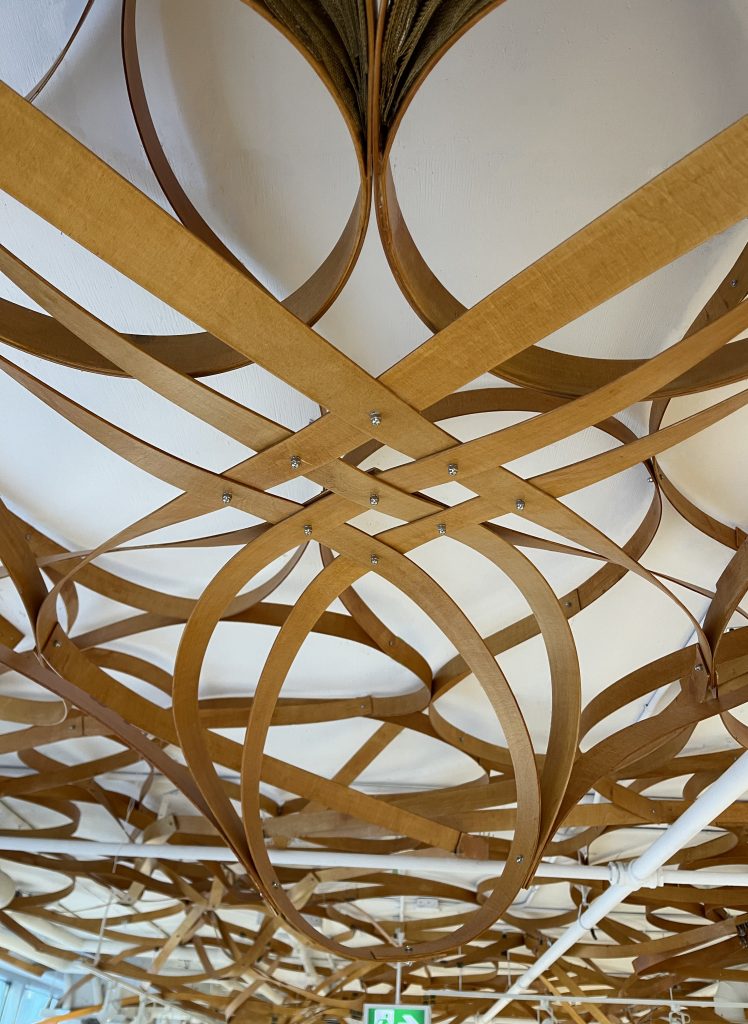

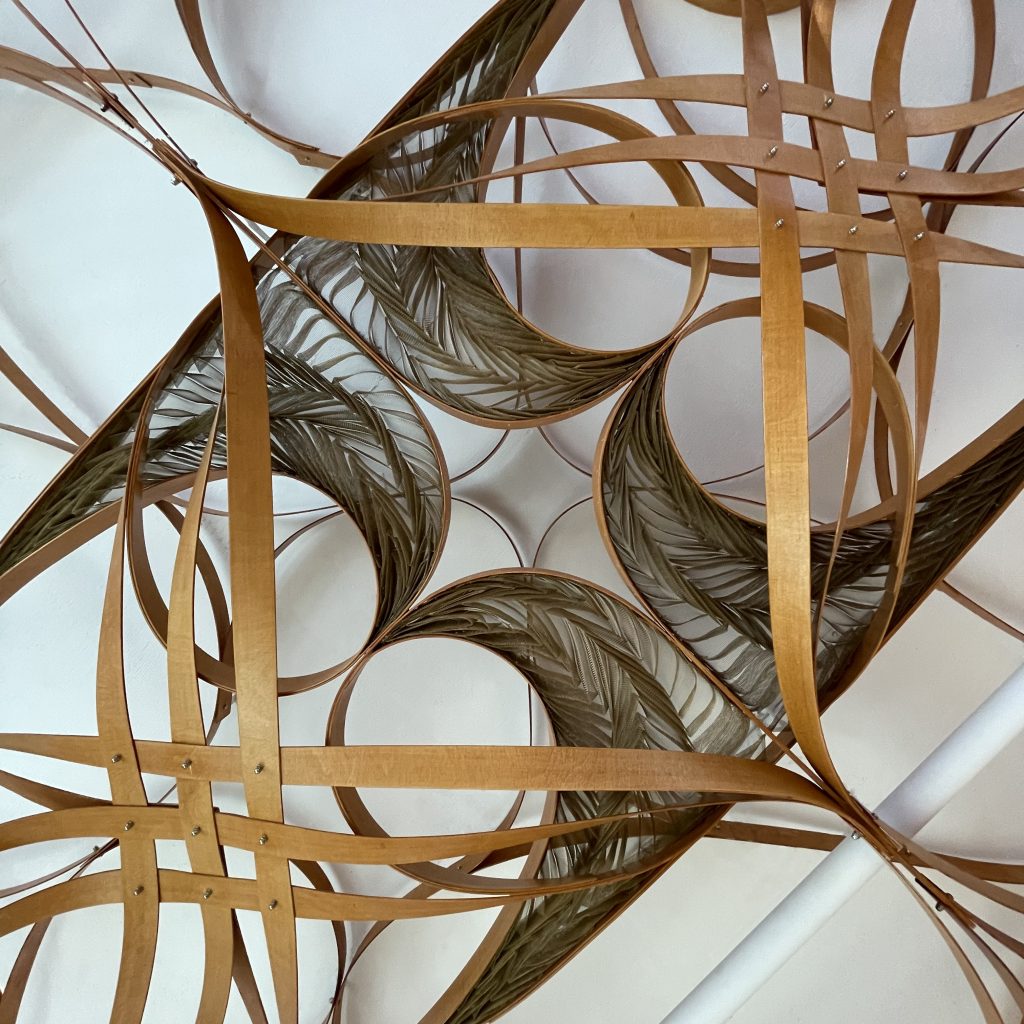
Resonant Currents II is the second generation of the work. The first was made 10 years ago by Báez with Carleton students for the Hub when it opened on Bank Street. The Hub invited him to make an installation after hearing him give a talk in 2012 at Creative Mornings Ottawa. The new, more intricate installation recycles material from the first.
“The experiential, hands-on process allowed students to work through the inherent properties of the materials involved as their improvised pieces were generated through this process,” says Báez. “The research, working process, and community engagement component of the project nurtures an appreciation for our cultural resonances.”
The undergraduate students who took part were Elisa Antunes, Jas Singh Chaney, Kavisha Dave, Sasha Lapointe-Lawless, Dana Mkarem, Milena Perini, Anya Ponomarenko, Muneebah Sheikh, and Norah Allan. The graduate students were Alexis Almacin and Yana Kigel.
“Throughout generations, our ancestors have passed down the natural art of weaving, an art that not only allows for experience sharing, but more importantly, knowledge transfer, bonding, and connection,” says second-year student Muneebah Sheikh, whose parents are from Pakistan.
“The birch plywood we were working with had a certain energy, as the natural material could only weave a certain way,” she says. “After familiarizing myself with the wood, I created units of delicate “petal” shapes that I wove through each other to create a six-petal flower that is connected through a central triangle.
“I feel really happy about the way the installation turned out; I think it’s a very meaningful way to encapsulate what the Hub means to everyone who visits. I made valuable connections with fellow students in the different streams of the architecture program at Carleton. I am very grateful I was given the opportunity to gain some experience within the field, but also that I was able to discover more about my personal background throughout the project.”
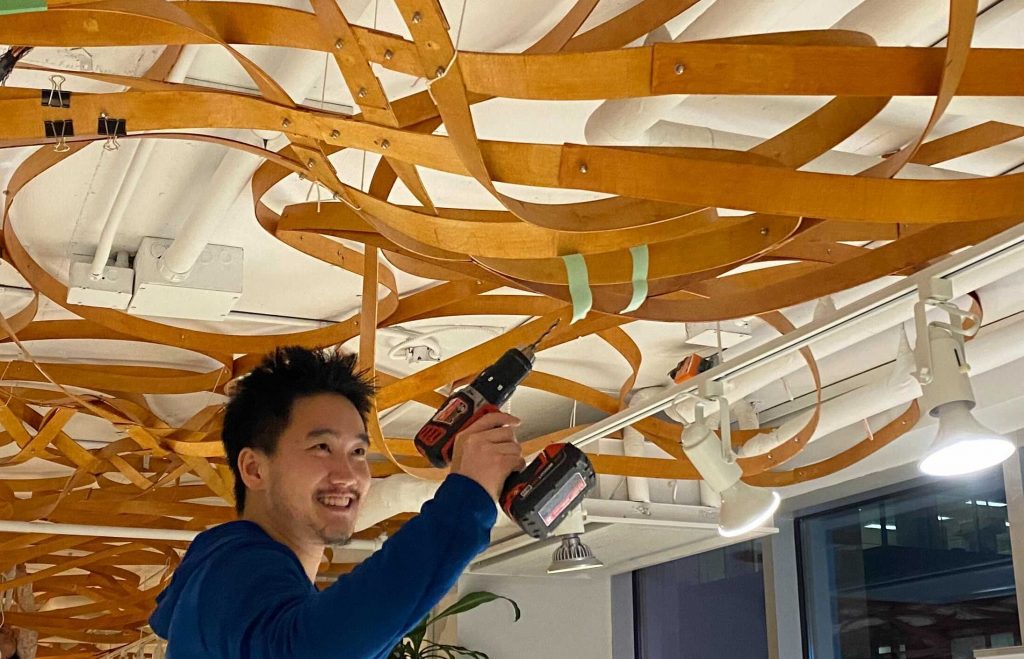
Second-year student Sasha Lapointe Lawless helps to install the artwork. His piece is based on the Rose of Sharon, the national flower of Korea which represents resilience because it will grow after being cut down.
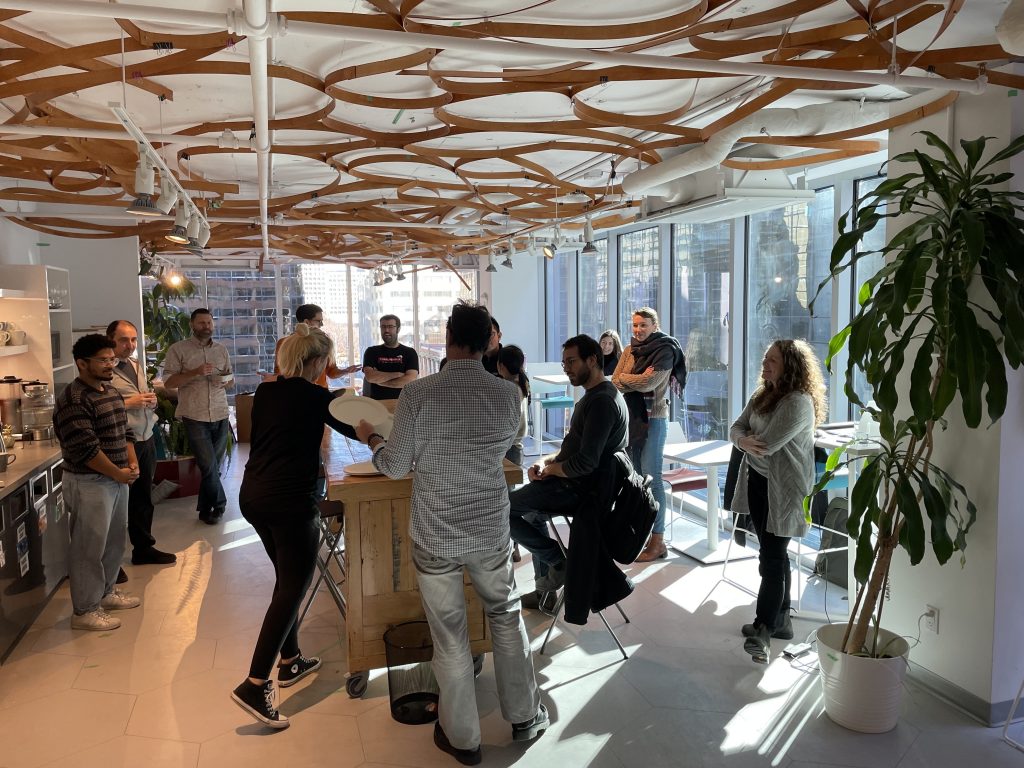
Half-finished installation above Impact Hub Ottawa members at 123 Slater Street.
Resonant Matter II is a project of the Crossings Interdisciplinary Research Collective. The Collective is the group of students working together with Báez and the organizations, institutions, and consultants also involved in the work. The aim is to explore the relationships between design culture and the evolution of technology and science.
Recent projects include:
• Gather-Ring (See it here also: https://gather-ring.ca/)
• The Light Keeper — a ceiling installation at Carleton’s Ojigkwanong Indigenous Student Centre in consultation with the centre’s architect, Douglas Cardinal
• Diluvio – Teatro delle Ombre
• Resonant Matter: Pattern Correlates of Process-In-Formation
• Bridges 2020 and 2017 conference on mathematical connections in art, music, architecture, education and culture
The six-month project began last April when 11 students volunteered for the Crossings Workshop summer course that Báez offers occasionally as part of his research.
“I introduced them to the process and how to work with it,” says Báez. “They then proceeded to compose their individual pieces while consulting me.”
The students worked on their sculptural pieces from June until August at the Architecture Building, sanding, priming, and staining the wood strips before taking them to the Hub for installation. Marc-Antoine Hébert, an architectural technology student at La Cité, assisted with the installation.
“I went on the earliest site visits, took pictures and measured and made a plan on AutoCAD, worked on my own piece, helped with sanding most of the wood, and helped with on-site installations with most of the pieces,” recalls second-year student Jas Singh Chaney.
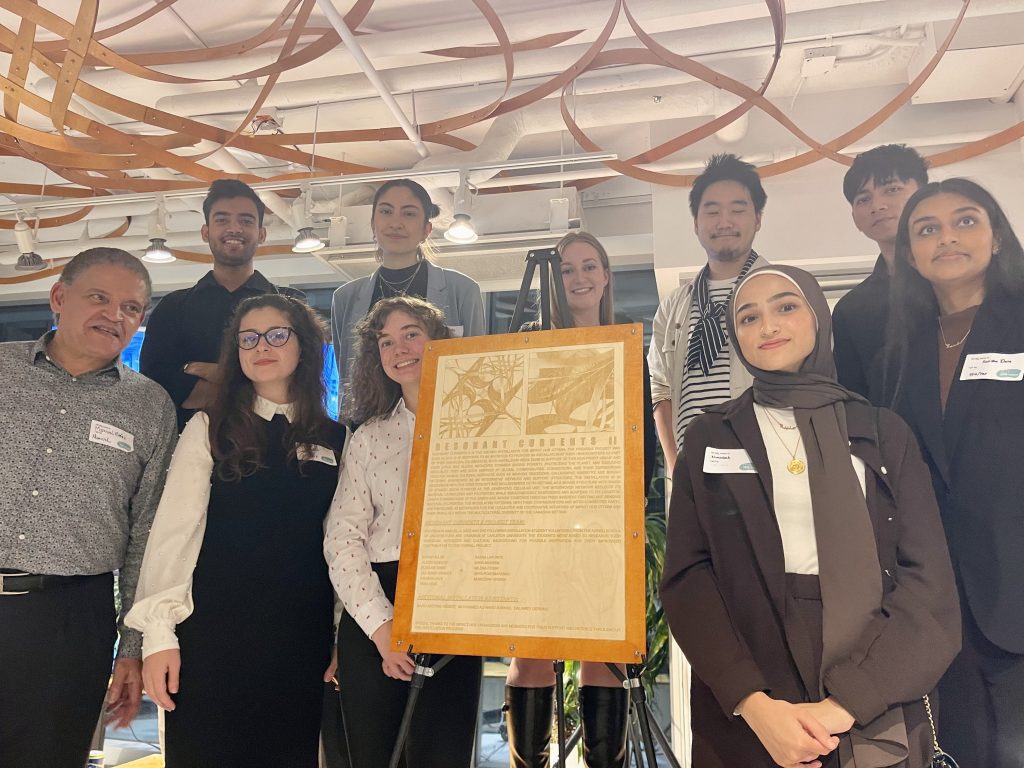
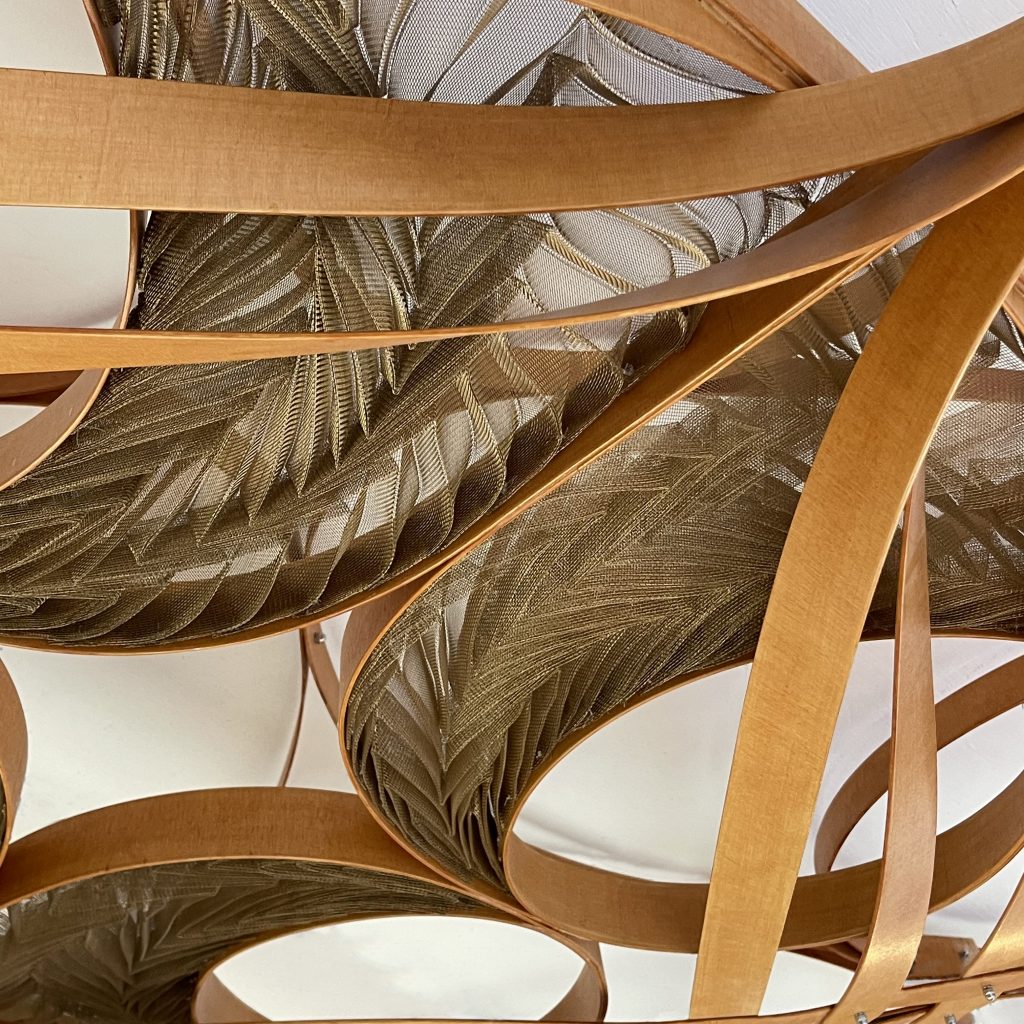

“My piece is based on the idea of energy and how it correlates and interconnects with everything and still is free of form. I feel the project has been successful, especially with the diverse group of individuals we were.”
In 2021, Impact Hub Ottawa received funding from Employment and Social Development Canada to make collaborative and cross-sector-focused enhancements to their space. Community consultations revealed a desire for more natural materials and artwork in the space, with specific mentions made of the art installation, Resonant Currents I, which had adorned the ceiling of the previous location.
It was this community enthusiasm that led Impact Hub Ottawa to reach out to Báez and explore collaboration on a new installation. As a result, the materials were recycled from the first project with an additional budget of $2,000 from the Hub.
“Working on this project was not only an enriched experience learning about what it means to engage oneself with the physical act of building and its tactile material but being a design project, which touches upon the theme of cross-cultural relations,” says second-year student Elisa Antunes.
“It was wonderful to observe how a group dynamic composed of students from a wide range of backgrounds can come together to create something unified and beautiful. In a way, this is very much one of the benefits of studying in a place such as Canada. It is quite exciting to see the whole come together as a final product,” she says.